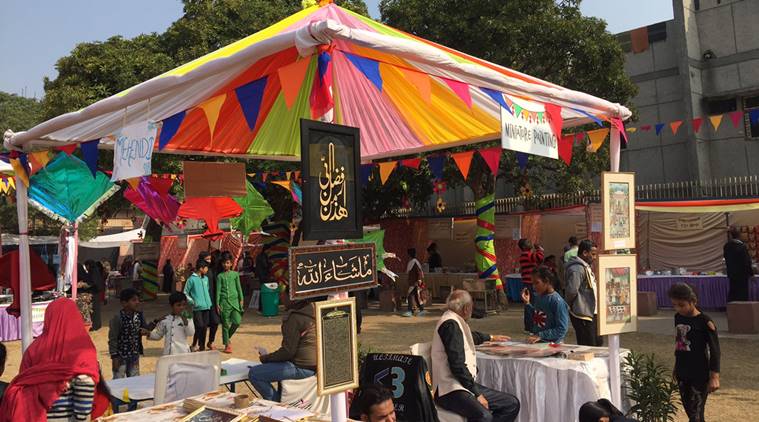When the Nizamuddin Basti Mela brought alive 700 years of tradition
Among the several initiatives, a major one is the annual Apni Basti Mela which was organised from December 21 to 23. It celebrated the food, art and music of Nizamuddin.

Bustling streets, narrow lanes, enormous flocks of people and animals moving together in synchrony, loud chatter and a perpetual aroma of delicious biryani and kebabs are some of the highlights of the Hazrat Nizamuddin Basti in Delhi.
This description more often than not would translate to chaos, however in case of this basti, these are the very aspects that are strangely welcoming and uplifting. The locality is predominantly a Muslim one with a small percentage of Hindus and Christians. The gallis are cramped with hawkers selling garlands, incense, bags and shoes, jewellery and silver utensils among other products.
The basti is named after the Sufi saint, Khwaja Nizamuddin Auliya, who is buried in the heart of the village in a dargah. People from all faiths come here for its calm, peaceful ambiance. An old man at the dargah, who was diagnosed with cancer, found renewed energy here, and testifies to the many others who arrive ‘sick’ or ‘possessed’, and find healing here.
Buried here is also, Amir Khusrow, the saint’s favourite disciple. The baoli here is not without memories for children who have see it change, from the clear water to the murky state it exists in today. A legend that is often heard is of the making of the baoli, which was being built around the same time at the Tughlaqabad fort, commissioned by Ghiyas-ud-din Tughlaq, in the 14th century. Labourers would work both at the fort and the baoli, much to the ire of the Emperor. To put an end to this the king banned the sale of the oil which was used to light lamps that aided the workers to work at night in Nizamuddin. It is believed that as a response the saint set fire to the water in the baoli, which provided enough illumination for the workers. It’s believed that Tughlaqabad was cursed, and it faced issues of construction and water shortage.






















No hay comentarios:
Publicar un comentario